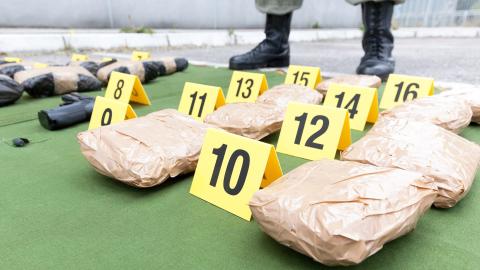The Rise of the Body Snatchers
Friday 3rd. Went to St. Thomas’s, took the Fœtus to the London, Recd. 10s. 6d. Came back to St. Thomas’s Recd. £4 4s. 0d., Went home, Met by agreement, Went to the Green got 5, Jack, Benn and me; Danl. and Bill at home, took the above 5 to Bartholw. at home all night.
From the diary of a body snatcher, recording his wares and the price he got from them at London Hospitals
Early Dissection
As the Age of Enlightenment stridently emerged in the 17th Century, practices once strictly taboo in the medieval period started to be tested by the curiosity of scientists and philosophers. Featuring large was the dissection of the dead. In the 16th Century the belief in the resurrection of the body after death was still commonplace, and so to interfere with its peaceful interment was a serious matter.
In 1506 James IV of Scotland tentatively granted permission to the Edinburgh Guild of Surgeons and Barbers to dissect certain hanged criminals. Henry VIII gradually followed James’s lead, but would only suffer four felons a year to undergo this treatment, one of the worst of punishments that could be administered by the state. Due to the potential consequences for the afterlife, the practice was seen as worse than death itself. This sense of fear was exploited by hangmen who would ceremonially deliver the condemned corpse to the surgeons for dissection in front of medical students and paying members of the public.
Resurrection Men
However as the new fascination with anatomy and physiognomy grew, so did the need for corpses, suddenly a few felons a year would not suffice! In 1752 the bodies of all hung felons were granted to anatomists but even this proved insufficient with growing numbers of medical schools spring up around the country. To meet this demand, a black market quickly emerged, trading in the stolen dead. ‘Resurrection Men’ could get an increasingly high price for their wares: human bodies that had been stolen from graveyards, and even deathbeds.
A common trick of the trade was to burrow into the head end of the grave and drag the corpse out with a rope tied around its neck. A more subtle method was to dig a hole at a certain distance from the grave and tunnel the body out without anyone knowing the grave had been disturbed. The shroud and grave goods would often be left in the grave on removal of the body, as court sentences were lighter for body snatching alone.
Without refrigeration, decomposing cadavers needed to be replaced frequently and the curious and profiting surgeons often conveniently failed to question from whence their fresh supplies came. Indeed some, including many in authority, condoned the practice as a necessary evil, allowing research necessary to save lives. For example the operation for removing bladder stones was significantly improved in 1727 with knowledge gained from anatomy. When once the operation took hours, new techniques meant that now could be finished in under a minute, reducing blood loss, distress and the likelihood of infection.
Mortsafes
Such was the prevalence of body snatching that graves increasingly started to become fortified. Mausoleums, vaults and table tombstones became popular amongst the rich. Meanwhile the poor would place stones or flowers on the grave to detect any movement in the soil that might betray a theft, or dig branches and brambles into the grave to make tunnelling more difficult. Body snatching was so rife in Scotland that in 1816 ‘Mortsafes’ were invented. These complex iron cages were bought or rented out until the body was sufficiently decomposed to deter the robbers. For further precaution, in some cemeteries friends would stay watch over graveyards at night, with watch towers sometimes being erected for the purpose.
Body Snatchers
In the 1820s the corpse trade branched out in an even more sinister direction. In this period, Burke and Hare, two Edinburgh ‘Ressurictionists’ diversified from the hard task of grave robbing. Over the course of a year they developed their own special brand of murder, a form of smothering while compressing the victim’s chest. Twenty bodies, murdered in this fashion were sold on, before local doctors started recognising them as local missing persons. This practice was also practised in London, where three men May, Williams and Bishop were eventually tried for their roles in the murder of an Italian boy and three homeless people, a woman with her child and a boy sleeping rough in a pig market.
These revelations shocked the public, riots accompanied Hare on his journey to the gaol and 30,000 turned up to witness the hanging of Williams and Bishop (May was transported to Australia.) It was largely this revulsion that prompted the Anatomy Act of 1832 in which the bodies of unclaimed paupers could be confiscated by the government to give to strictly licenced anatomists, ending the trade in snatched corpses from graves.
Did you know?
Many of the famed doctors of the 18th and early 19th Centuries were unscrupulous in their acquisitions of cadavers for dissection. Anatomists like William Hunter often preserved the more interesting parts for their private collections.
















